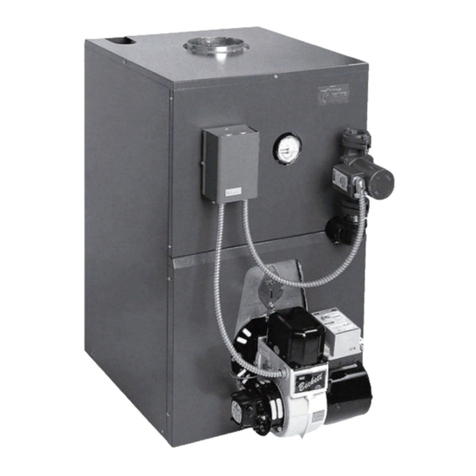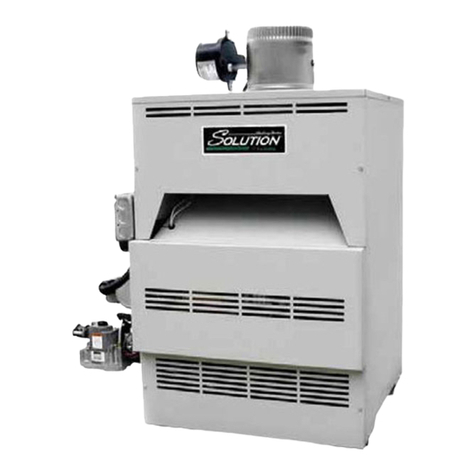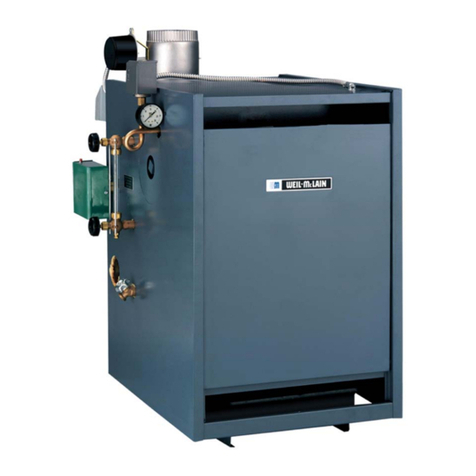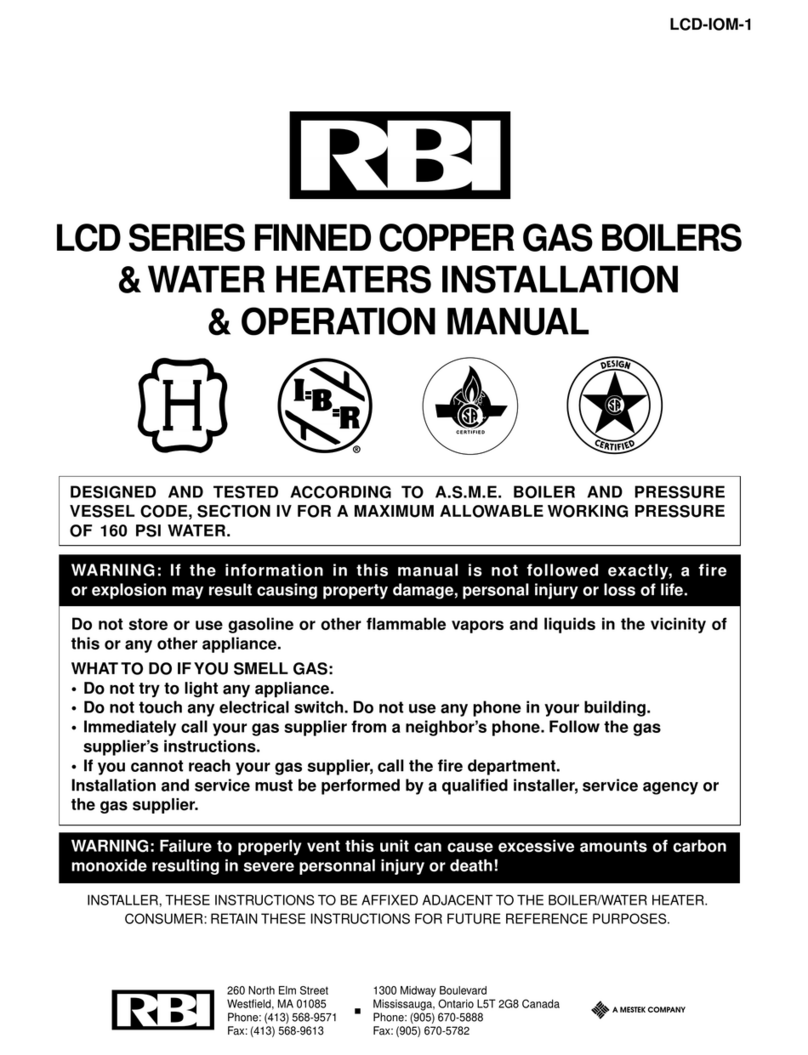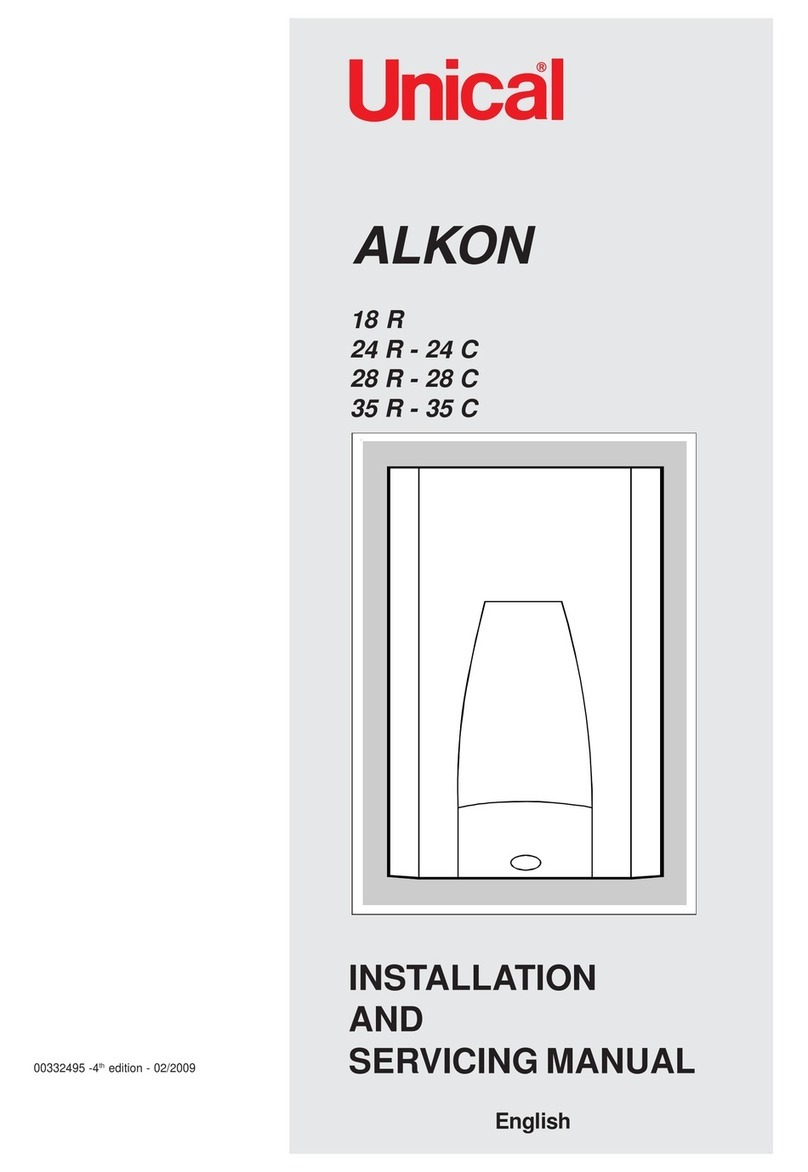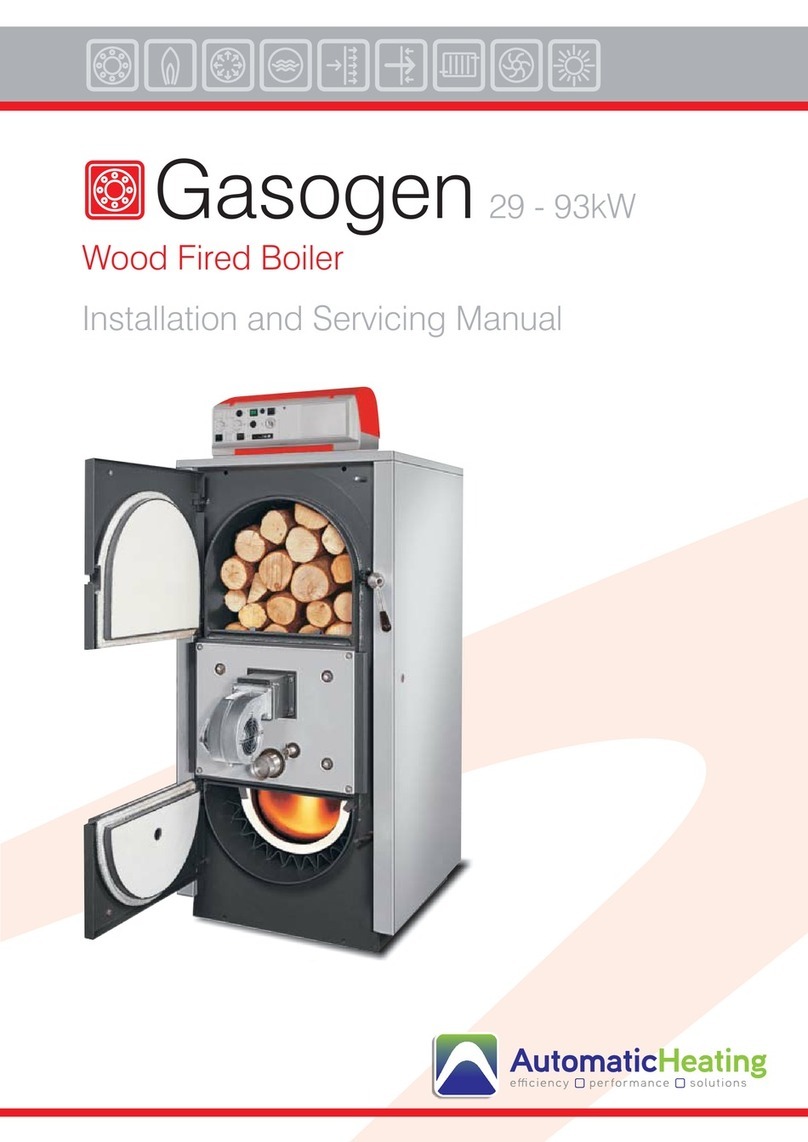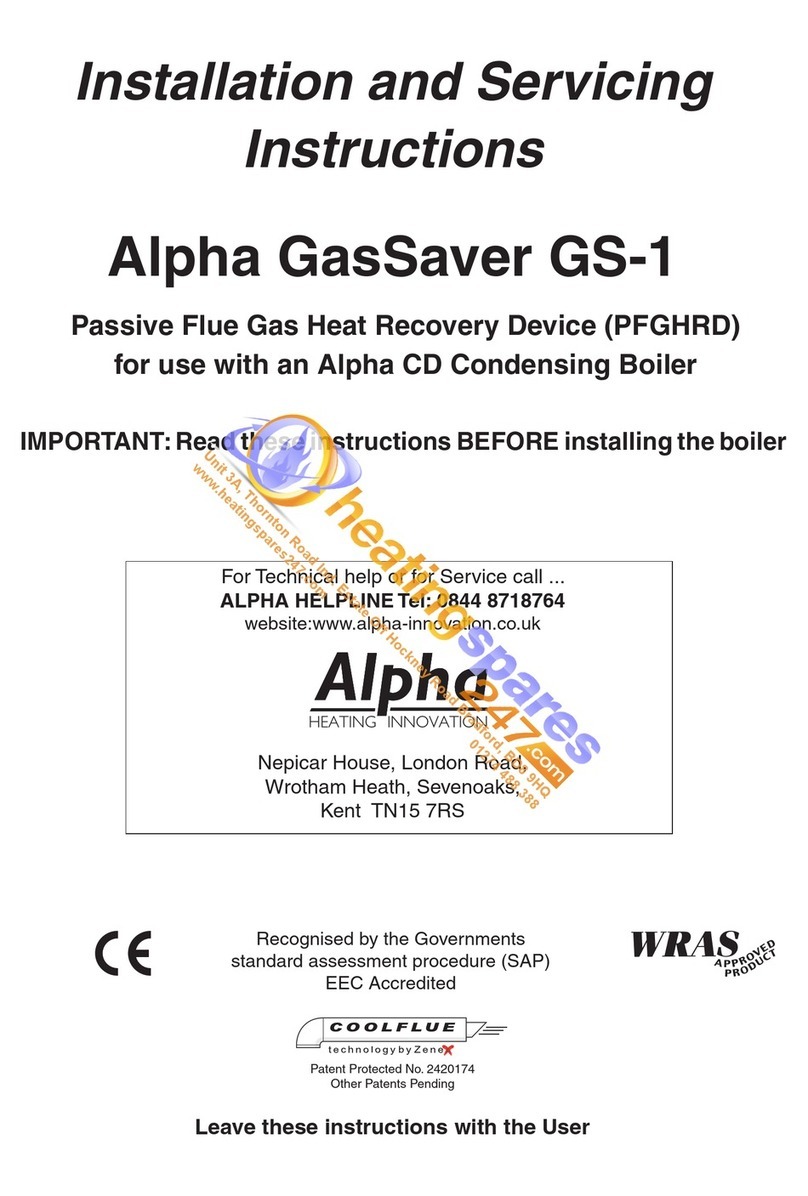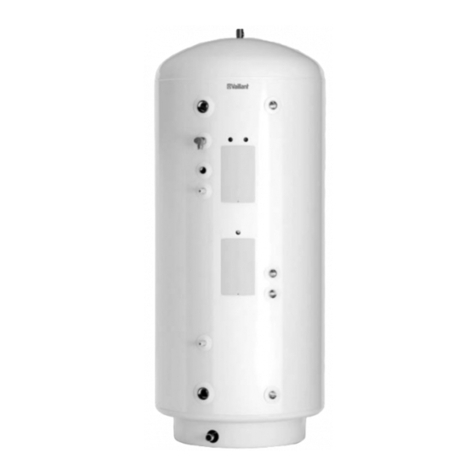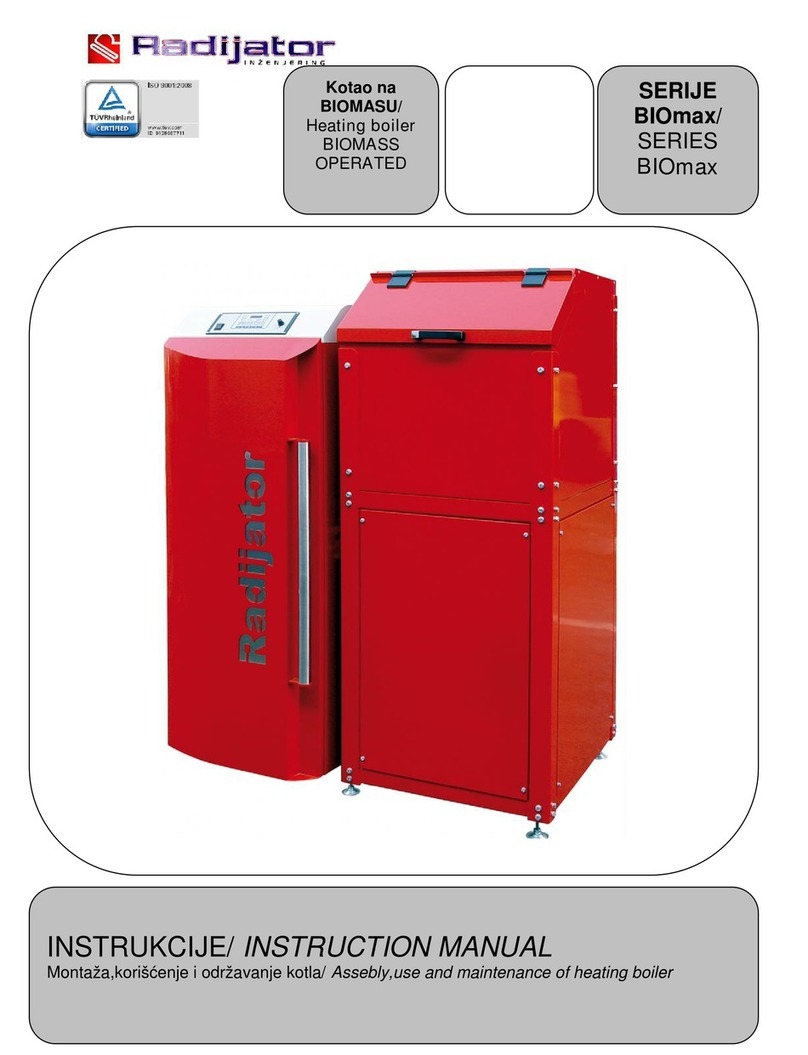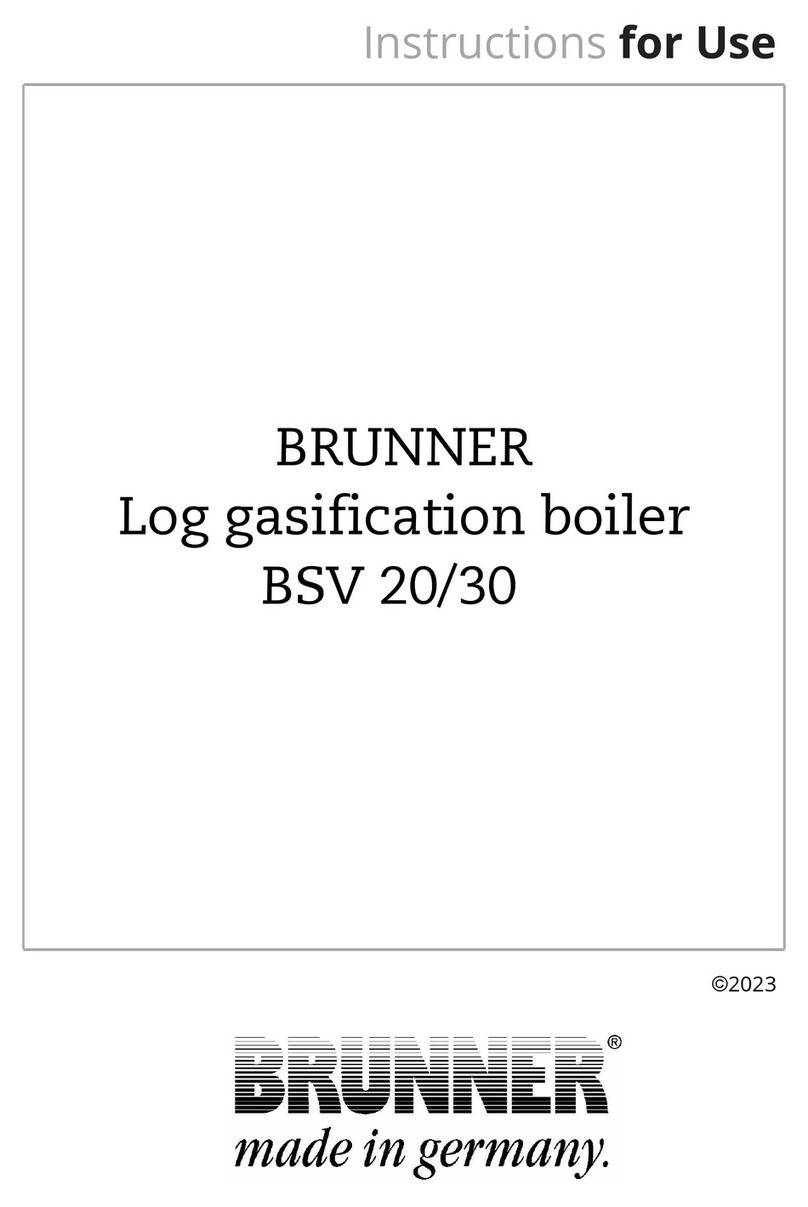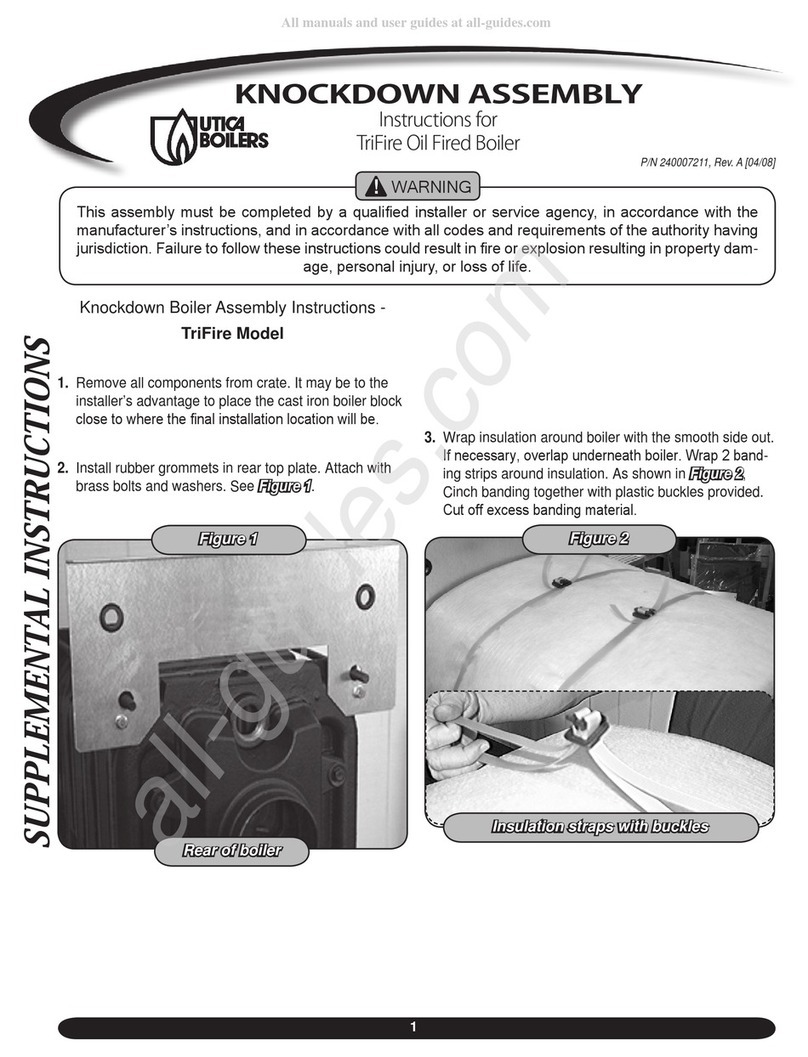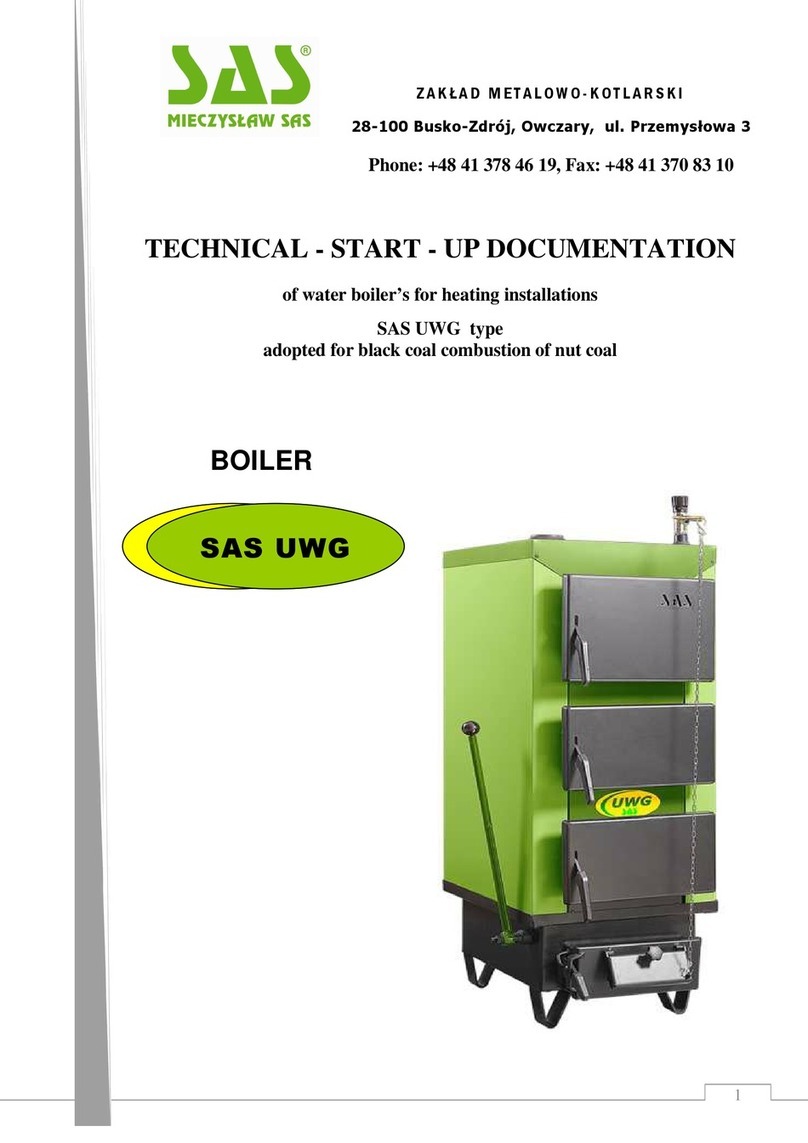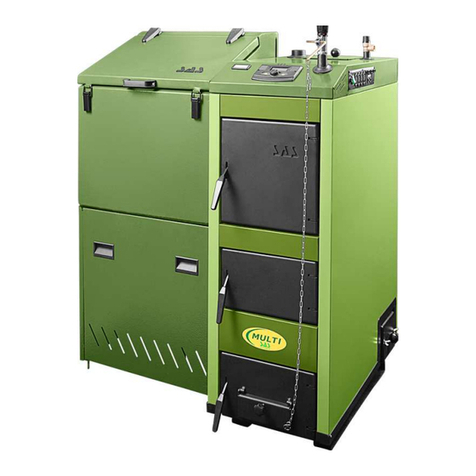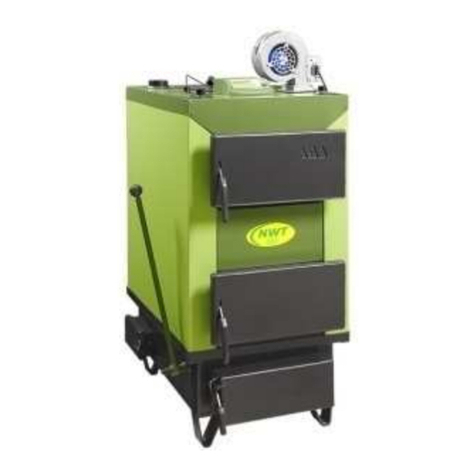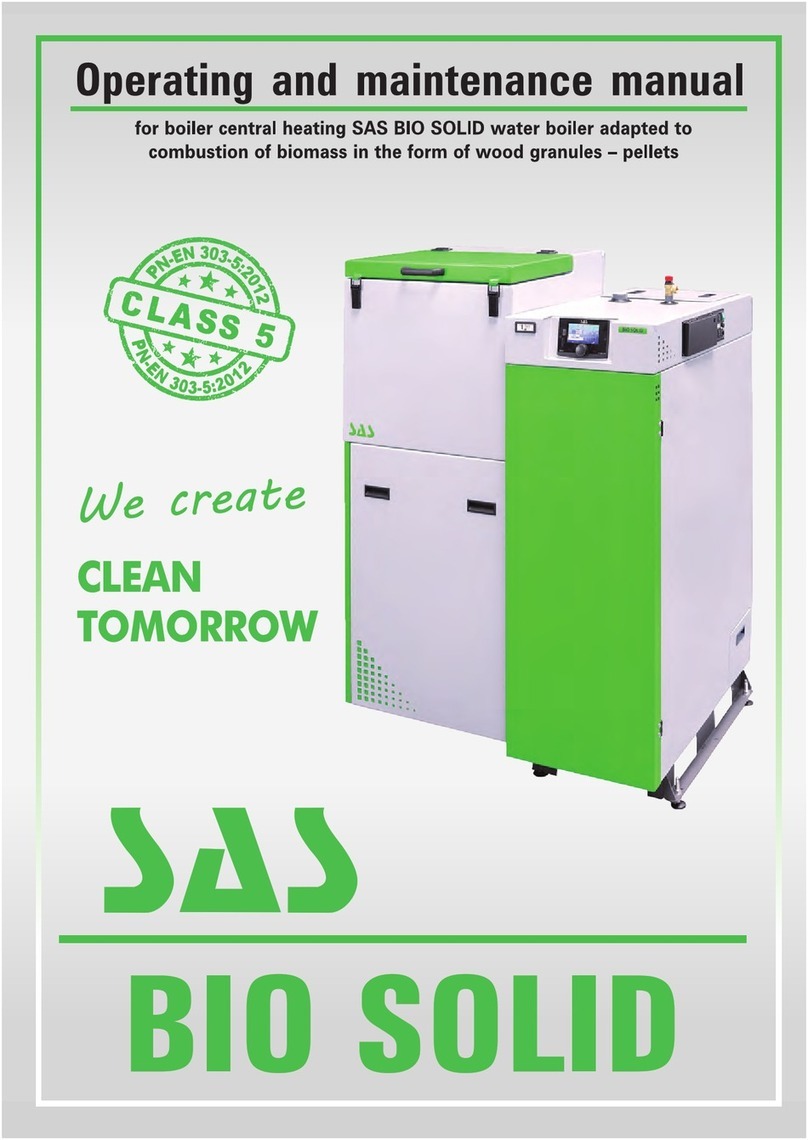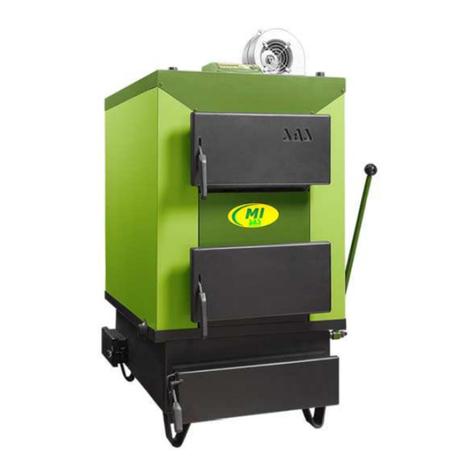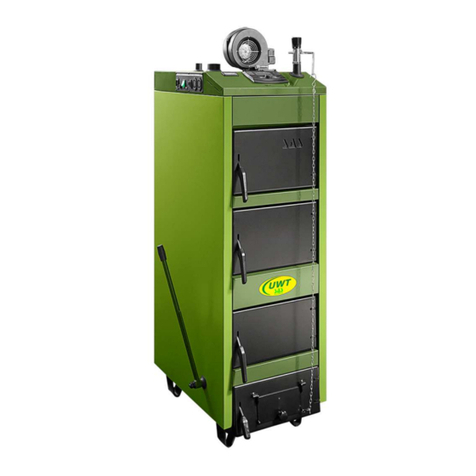
6
1. PREFACE
Dear Buyer and User of a SAS AGRO-ECO boiler, This operating and main-
tenance manual contains all necessary information for energy-efficient, safe and
long operation of your boiler.
The device is delivered together with a set of operating and maintenance man-
uals for operation of the boiler and its controller.
Before installation and operation of this device you must read and under-
stand contents of this operating and maintenance manual.
After acquainting with this manual you will be able to use this device in an op-
timum way. By becoming thoroughly acquainted with this manual you will be able
to operate the boiler in an effective and safe way.
Boilers manufactured by the Metal Products and Boiler Production Plant "SAS”
meet the requirements of relevant EU directives and are CE-marked, and this is
confirmed in the enclosed EC DECLARATION OF CONFORMITY.
THIS DOCUMENTATION SHOULD BE KEPT FOR A FUTURE USE, AND IT
IS ALSO A WARRANTY CARD FOR THE BOILER.
2. INTENDED USE OF A BOILER
SAS AGRO-ECO boilers with a fuel tank and an automated feeder are desig-
nated for water central heating systems, open vented or sealed*, with gravita-
tional or forced water flow, secured according to current specific national or EU
regulations (PN-EN 12828+A1:2014-05 Heating systems in buildings. Design for
water-based heating systems). They are recommended, in particular, for heating of
residential flats in one-family or multi-family houses, commercial, services, cater-
ing and workshop facilities, etc., in which water supply design temperature does
not exceed 85 °C, and working pressure does not exceed 1.5 bar. Required hot
gas pass 0.30 – 0.55 mbar, depending on the device output (according to PN-EN
13384-1:2015-05 Chimneys. Thermal and fluid dynamic calculation methods. Part
1: Chimneys serving one heating appliance).
These boilers may also work with domestic hot water systems through a heat
exchanger of any producer that meets current standards. The boiler cannot be
used as a continuous flow water heater. The SAS AGRO-ECO boiler is also not
intended to be used as an air heater.
A boiler for heating a building should be selected on a basis of an energy heat
balance of that building, developed in accordance with specific current national
or EU regulations (PN-EN 12831:2006 Heating systems and water based cooling
systems in buildings – Method for calculation of the design heat load).
* the installed system must meet specific requirements of standards in force in a country of destination concerning safety
devices for water-based heating equipment in open vented systems,and expansion vessels in an open vented or sealed
systems (concerns boilers of up to 100 kW) together with accessories: diaphragm expansion vessel, pressure relief
valve, equipment for control and measurements, or devices for removing excess heat.
*) inner partitions (components in contact with fire) are made of 6 mm thick boiler plate steel P265GH (8 mm thick plate
boiler steel 16Mo3 for boilers exceeding 78 kW); the external shell of the water jacket is made of 4 mm steel plate (5 mm
for boilers exceeding 78 kW).
1. PRELIMINARY

